Congpei Qiu
Refining CLIP's Spatial Awareness: A Visual-Centric Perspective
Apr 03, 2025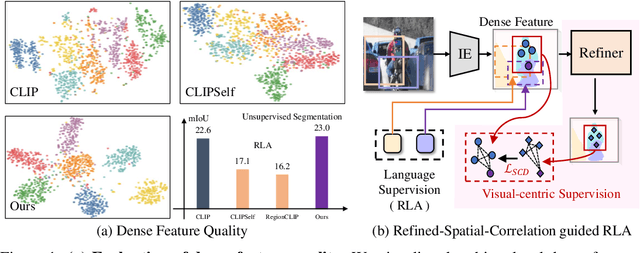
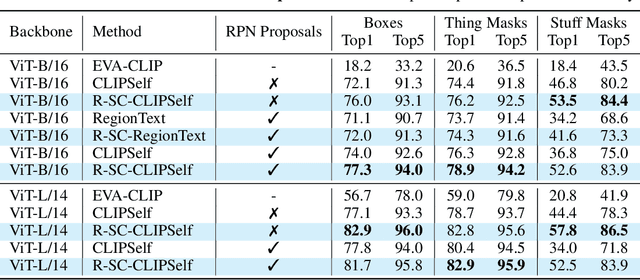


Abstract:Contrastive Language-Image Pre-training (CLIP) excels in global alignment with language but exhibits limited sensitivity to spatial information, leading to strong performance in zero-shot classification tasks but underperformance in tasks requiring precise spatial understanding. Recent approaches have introduced Region-Language Alignment (RLA) to enhance CLIP's performance in dense multimodal tasks by aligning regional visual representations with corresponding text inputs. However, we find that CLIP ViTs fine-tuned with RLA suffer from notable loss in spatial awareness, which is crucial for dense prediction tasks. To address this, we propose the Spatial Correlation Distillation (SCD) framework, which preserves CLIP's inherent spatial structure and mitigates the above degradation. To further enhance spatial correlations, we introduce a lightweight Refiner that extracts refined correlations directly from CLIP before feeding them into SCD, based on an intriguing finding that CLIP naturally captures high-quality dense features. Together, these components form a robust distillation framework that enables CLIP ViTs to integrate both visual-language and visual-centric improvements, achieving state-of-the-art results across various open-vocabulary dense prediction benchmarks.
Generating Multimodal Driving Scenes via Next-Scene Prediction
Mar 19, 2025Abstract:Generative models in Autonomous Driving (AD) enable diverse scene creation, yet existing methods fall short by only capturing a limited range of modalities, restricting the capability of generating controllable scenes for comprehensive evaluation of AD systems. In this paper, we introduce a multimodal generation framework that incorporates four major data modalities, including a novel addition of map modality. With tokenized modalities, our scene sequence generation framework autoregressively predicts each scene while managing computational demands through a two-stage approach. The Temporal AutoRegressive (TAR) component captures inter-frame dynamics for each modality while the Ordered AutoRegressive (OAR) component aligns modalities within each scene by sequentially predicting tokens in a fixed order. To maintain coherence between map and ego-action modalities, we introduce the Action-aware Map Alignment (AMA) module, which applies a transformation based on the ego-action to maintain coherence between these modalities. Our framework effectively generates complex, realistic driving scenes over extended sequences, ensuring multimodal consistency and offering fine-grained control over scene elements.
Mitigating Object Dependencies: Improving Point Cloud Self-Supervised Learning through Object Exchange
Apr 11, 2024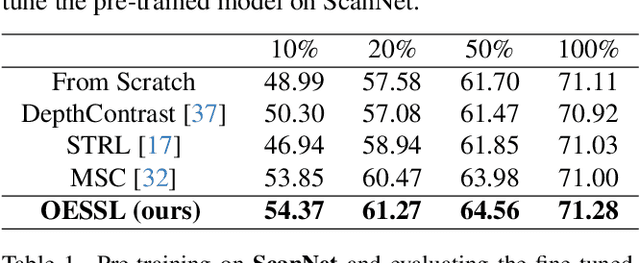
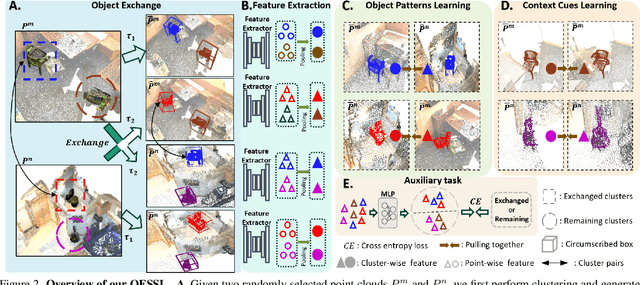

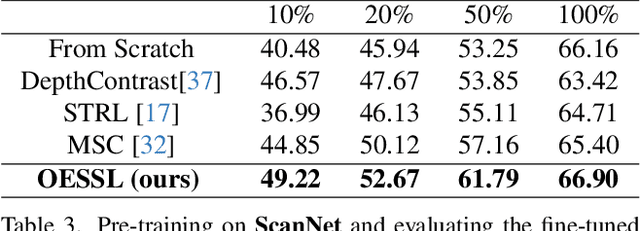
Abstract:In the realm of point cloud scene understanding, particularly in indoor scenes, objects are arranged following human habits, resulting in objects of certain semantics being closely positioned and displaying notable inter-object correlations. This can create a tendency for neural networks to exploit these strong dependencies, bypassing the individual object patterns. To address this challenge, we introduce a novel self-supervised learning (SSL) strategy. Our approach leverages both object patterns and contextual cues to produce robust features. It begins with the formulation of an object-exchanging strategy, where pairs of objects with comparable sizes are exchanged across different scenes, effectively disentangling the strong contextual dependencies. Subsequently, we introduce a context-aware feature learning strategy, which encodes object patterns without relying on their specific context by aggregating object features across various scenes. Our extensive experiments demonstrate the superiority of our method over existing SSL techniques, further showing its better robustness to environmental changes. Moreover, we showcase the applicability of our approach by transferring pre-trained models to diverse point cloud datasets.
De-coupling and De-positioning Dense Self-supervised Learning
Mar 29, 2023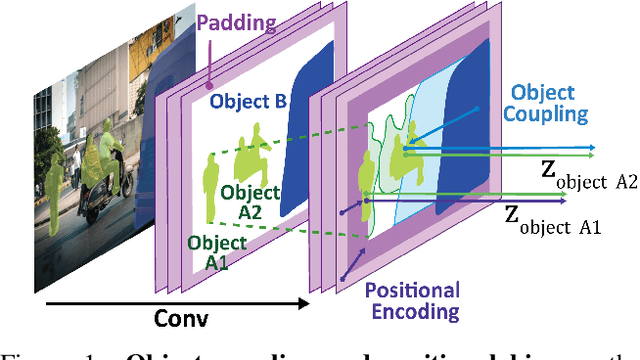

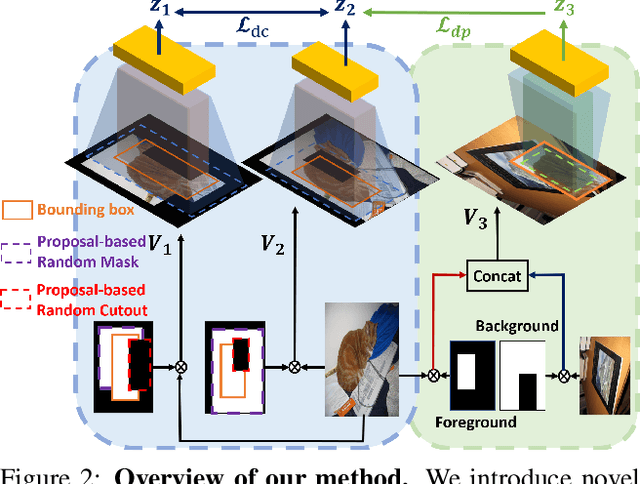

Abstract:Dense Self-Supervised Learning (SSL) methods address the limitations of using image-level feature representations when handling images with multiple objects. Although the dense features extracted by employing segmentation maps and bounding boxes allow networks to perform SSL for each object, we show that they suffer from coupling and positional bias, which arise from the receptive field increasing with layer depth and zero-padding. We address this by introducing three data augmentation strategies, and leveraging them in (i) a decoupling module that aims to robustify the network to variations in the object's surroundings, and (ii) a de-positioning module that encourages the network to discard positional object information. We demonstrate the benefits of our method on COCO and on a new challenging benchmark, OpenImage-MINI, for object classification, semantic segmentation, and object detection. Our extensive experiments evidence the better generalization of our method compared to the SOTA dense SSL methods
Leverage Your Local and Global Representations: A New Self-Supervised Learning Strategy
Apr 13, 2022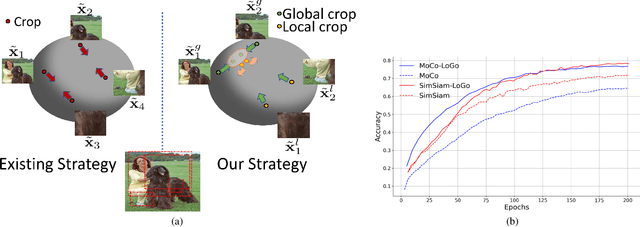
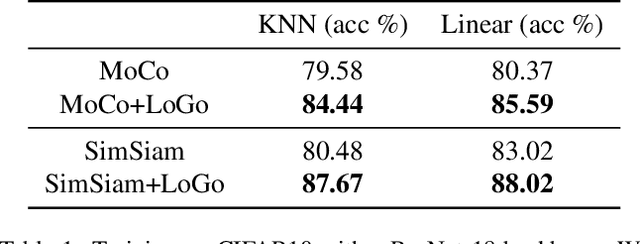

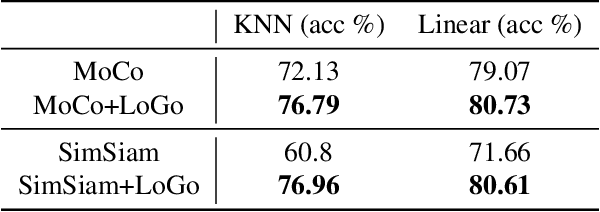
Abstract:Self-supervised learning (SSL) methods aim to learn view-invariant representations by maximizing the similarity between the features extracted from different crops of the same image regardless of cropping size and content. In essence, this strategy ignores the fact that two crops may truly contain different image information, e.g., background and small objects, and thus tends to restrain the diversity of the learned representations. In this work, we address this issue by introducing a new self-supervised learning strategy, LoGo, that explicitly reasons about Local and Global crops. To achieve view invariance, LoGo encourages similarity between global crops from the same image, as well as between a global and a local crop. However, to correctly encode the fact that the content of smaller crops may differ entirely, LoGo promotes two local crops to have dissimilar representations, while being close to global crops. Our LoGo strategy can easily be applied to existing SSL methods. Our extensive experiments on a variety of datasets and using different self-supervised learning frameworks validate its superiority over existing approaches. Noticeably, we achieve better results than supervised models on transfer learning when using only 1/10 of the data.
 Add to Chrome
Add to Chrome Add to Firefox
Add to Firefox Add to Edge
Add to Edge